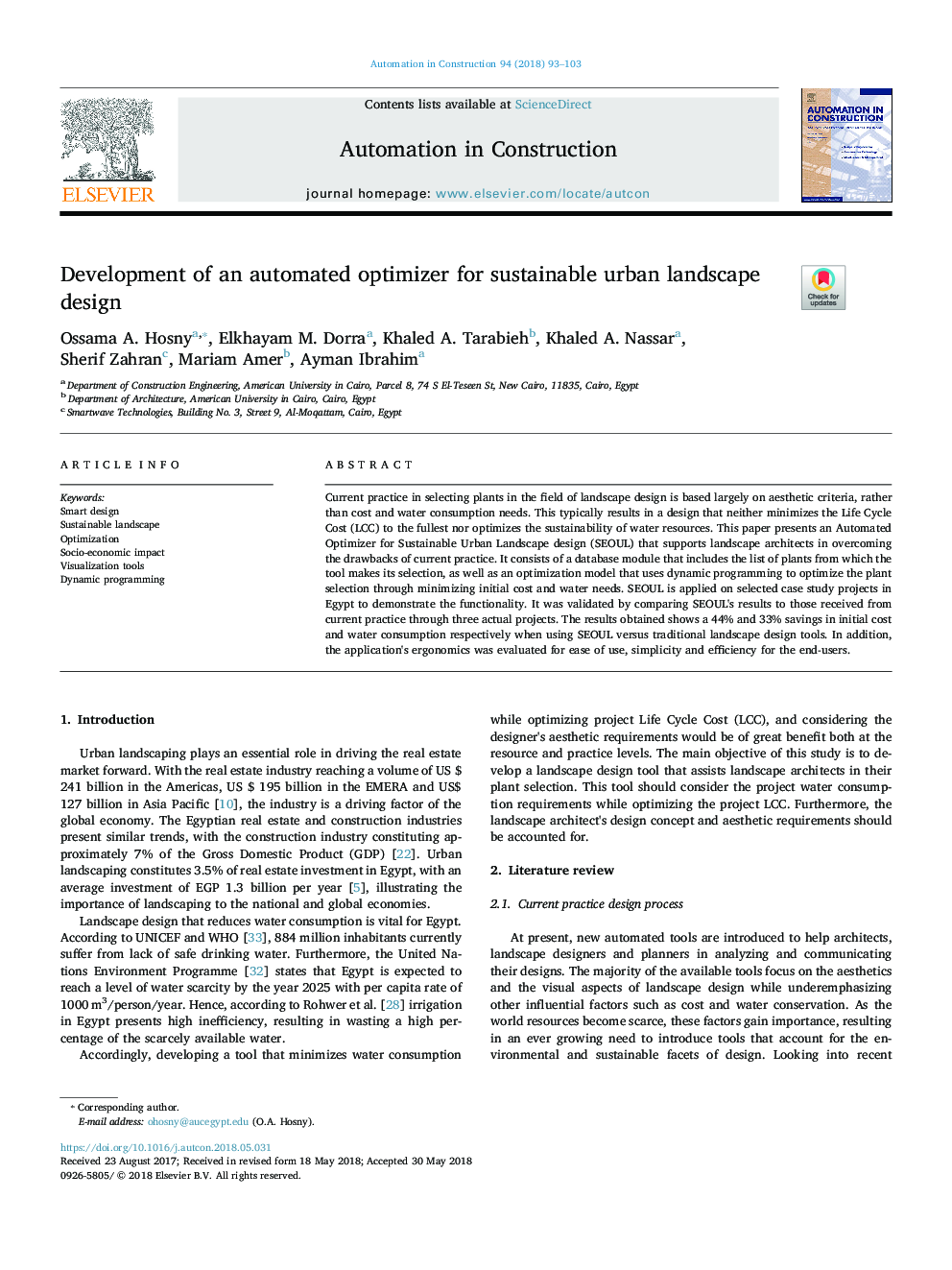| Article ID | Journal | Published Year | Pages | File Type |
|---|---|---|---|---|
| 6695226 | Automation in Construction | 2018 | 11 Pages |
Abstract
Current practice in selecting plants in the field of landscape design is based largely on aesthetic criteria, rather than cost and water consumption needs. This typically results in a design that neither minimizes the Life Cycle Cost (LCC) to the fullest nor optimizes the sustainability of water resources. This paper presents an Automated Optimizer for Sustainable Urban Landscape design (SEOUL) that supports landscape architects in overcoming the drawbacks of current practice. It consists of a database module that includes the list of plants from which the tool makes its selection, as well as an optimization model that uses dynamic programming to optimize the plant selection through minimizing initial cost and water needs. SEOUL is applied on selected case study projects in Egypt to demonstrate the functionality. It was validated by comparing SEOUL's results to those received from current practice through three actual projects. The results obtained shows a 44% and 33% savings in initial cost and water consumption respectively when using SEOUL versus traditional landscape design tools. In addition, the application's ergonomics was evaluated for ease of use, simplicity and efficiency for the end-users.
Keywords
Related Topics
Physical Sciences and Engineering
Engineering
Civil and Structural Engineering
Authors
Ossama A. Hosny, Elkhayam M. Dorra, Khaled A. Tarabieh, Khaled A. Nassar, Sherif Zahran, Mariam Amer, Ayman Ibrahim,
